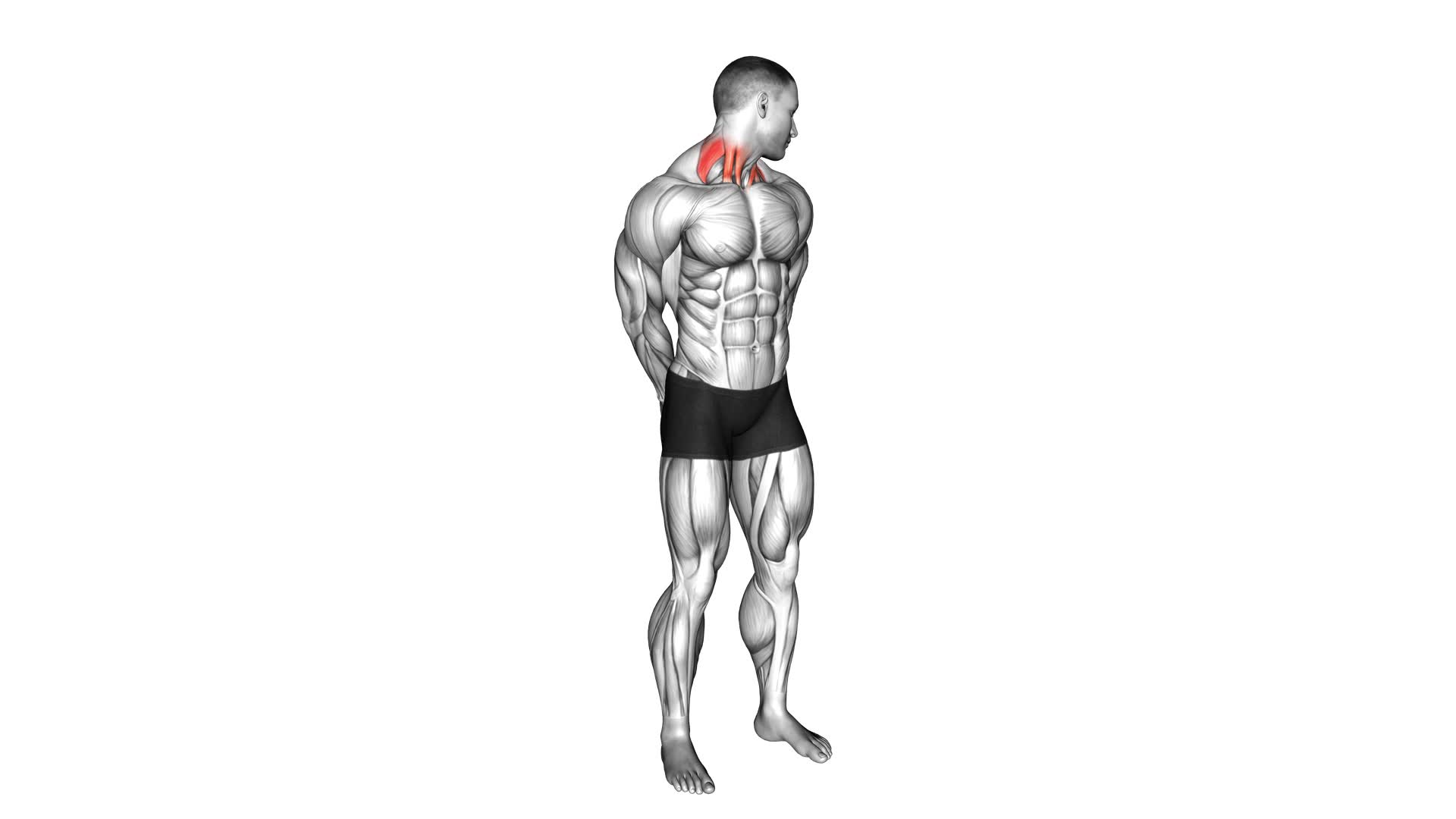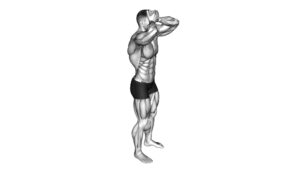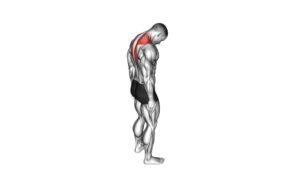Extension And Inclination Neck Stretch – Video Exercise Guide & Tips

Are you looking for a quick and effective way to stretch your neck? Look no further than the Extension And Inclination Neck Stretch!
Watch This Exercise Video
This video exercise guide will show you the proper technique to safely stretch your neck muscles. With variations and modifications available, you can personalize your stretch routine.
Avoid common mistakes and incorporate this stretch into your exercise routine for maximum benefits.
Get ready to release tension and improve flexibility with this neck stretch!
Key Takeaways
- The Extension And Inclination Neck Stretch improves posture and prevents neck pain.
- Proper technique is important to maximize the benefits of the stretch and reduce the risk of injuries.
- Common mistakes to avoid include not maintaining proper posture, using too much force, and neglecting modifications.
- Following precautions and safety tips such as maintaining proper form, avoiding straining the neck, and starting slowly and gently is crucial for a safe and effective neck stretch.
Benefits of the Extension And Inclination Neck Stretch
What are the benefits of performing the Extension And Inclination Neck Stretch?
This exercise is highly beneficial for improving posture and preventing neck pain. By regularly performing this stretch, you can correct the forward head posture that many people develop due to prolonged periods of sitting or looking down at electronic devices.
The Extension And Inclination Neck Stretch helps to strengthen the muscles in the neck and upper back, which are essential for maintaining proper alignment and reducing strain on the neck. It also helps to increase flexibility in the neck, allowing for a greater range of motion and preventing stiffness.
This stretch can relieve tension and tightness in the neck, reducing the risk of developing chronic pain or discomfort. Additionally, by improving posture and reducing strain on the neck, this exercise can help to prevent headaches and improve overall comfort.
Incorporating the Extension And Inclination Neck Stretch into your daily routine can have a significant positive impact on your posture and overall neck health, promoting a pain-free and comfortable lifestyle.
Proper Technique for the Extension And Inclination Neck Stretch
To ensure you perform the Extension And Inclination Neck Stretch correctly, it's important to be aware of common mistakes and the benefits of using proper technique.
By avoiding common mistakes such as jerking movements or excessive force, you can prevent injury and maximize the effectiveness of the stretch.
Using proper technique will help you properly stretch and strengthen the muscles in your neck, improving flexibility and reducing tension.
Common Mistakes to Avoid
To perform the Extension And Inclination Neck Stretch correctly, avoid these common mistakes:
- Not maintaining proper posture: Make sure to keep your spine straight and your shoulders relaxed throughout the exercise. This will ensure that you're targeting the correct muscles and preventing unnecessary strain on your neck.
- Using too much force: Remember, this is a gentle stretch. Avoid applying excessive pressure or pulling on your neck. Instead, focus on using controlled movements and gradually increasing the stretch over time.
- Overarching your neck: It's important to maintain a neutral position in your neck and avoid excessive extension or flexion. Keep your head aligned with your spine and avoid tilting it too far forward or backward.
- Neglecting modifications: If you have any neck injuries or limitations, it's crucial to modify the stretch accordingly. Consult with a healthcare professional or a qualified fitness instructor to learn the appropriate modifications for your specific needs.
Benefits of Proper Technique
By practicing proper technique, you can maximize the benefits of the Extension And Inclination Neck Stretch, reducing the risk of injuries and improving overall neck flexibility and mobility.
When performing the stretch with correct form, you're effectively stretching and strengthening the muscles in your neck, which leads to improved flexibility. This increased flexibility allows for better range of motion in your neck, making everyday movements more comfortable and reducing the likelihood of experiencing neck pain.
Additionally, proper technique helps to prevent injuries by ensuring that you aren't placing unnecessary strain on your neck muscles. It's important to remember to maintain proper alignment and control throughout the exercise to reap the full benefits and minimize the risk of any potential discomfort or injury.
Precautions and Safety Tips for the Neck Stretch
To ensure a safe and effective neck stretch, it's important to maintain proper form and technique. Avoid straining your neck by keeping your movements slow and controlled, and never force your head beyond its natural range of motion.
Remember to listen to your body and stop if you feel any pain or discomfort during the exercise.
Proper Form Techniques
Start with these key tips to ensure you perform the neck stretch exercise safely and effectively:
- Maintain proper posture: Stand or sit up straight with your shoulders relaxed and your chin parallel to the ground. This will help prevent unnecessary strain on your neck.
- Start slowly and gently: Gradually ease into the stretch, avoiding any sudden or jerky movements. This will allow your muscles to warm up and reduce the risk of injury.
- Listen to your body: Pay attention to any discomfort or pain during the stretch. If you feel any sharp or intense pain, stop immediately and consult a healthcare professional.
- Avoid excessive pressure: Be gentle when stretching your neck and avoid pushing or pulling too hard. Remember, the goal is to improve flexibility, not to force your neck into uncomfortable positions.
Avoiding Neck Strain
Did you know that there are precautions and safety tips you can follow to avoid neck strain while performing neck stretch exercises?
It's essential to prioritize your safety and well-being when engaging in any exercise routine, including those that target neck flexibility. To prevent strain and potential injury, it's crucial to maintain proper form and technique throughout the exercise.
Start by ensuring that your movements are controlled and gentle, avoiding any jerking or sudden motions. Additionally, always listen to your body and stop if you experience any pain or discomfort.
If you're new to neck exercises, consider starting with shorter durations and gradually increasing the intensity and duration over time. Remember, your neck is a sensitive area, so taking precautions and practicing proper form is key to a safe and effective neck stretch routine.
Variations and Modifications of the Neck Stretch
You can modify the neck stretch by tilting your head both forward and to the side. This allows you to target different muscles in the neck and increase the effectiveness of the stretch.
Here are four variations and modifications of the neck stretch that you can try:
- Forward Tilt with Chin Tuck: Start by tilting your head forward, bringing your chin towards your chest. Then, gently tuck your chin in towards your throat. This variation helps to stretch the muscles at the back of your neck and improve your posture.
- Side Tilt with Ear to Shoulder: Begin by tilting your head towards one shoulder, bringing your ear towards your shoulder. Hold the stretch on one side, then switch to the other side. This modification targets the muscles on the sides of your neck and can help relieve tension in those areas.
- Diagonal Tilt: Tilt your head diagonally, bringing your ear towards your opposite shoulder. This variation stretches the muscles at the back and side of your neck, providing a deeper stretch and increasing flexibility.
- Rotation Stretch: Turn your head to one side, as if you're trying to look over your shoulder. Hold the stretch and then repeat on the other side. This modification helps to stretch the muscles in the front and sides of your neck, improving range of motion.
Common Mistakes to Avoid During the Neck Stretch
To ensure proper form and prevent injury, it's important to be aware of common mistakes that should be avoided during the neck stretch. By taking certain precautions and avoiding these mistakes, you can minimize the risk of neck strain and maximize the effectiveness of the exercise.
One common mistake to avoid is overstretching the neck. While it's important to stretch the muscles, excessive stretching can lead to strain and discomfort. Instead, focus on gentle and controlled movements, gradually increasing the stretch as you feel more comfortable.
Another mistake to avoid is using too much force or pressure during the stretch. Applying excessive force can strain the neck muscles and potentially cause injury. Instead, use a moderate amount of pressure and listen to your body's cues. If you feel any pain or discomfort, ease off the stretch immediately.
Additionally, it's important to maintain proper posture during the neck stretch. Avoid slouching or rounding your shoulders, as this can put unnecessary strain on the neck muscles. Instead, sit or stand tall with your shoulders relaxed and your spine aligned.
Incorporating the Neck Stretch Into Your Exercise Routine
To incorporate the neck stretch into your exercise routine, consistency is key. By adding this simple exercise to your routine, you can experience the benefits of neck stretches and improve your overall neck flexibility and mobility. Here are four ways you can easily incorporate neck stretches into your exercise routine:
- Warm-up: Start your exercise routine with a few minutes of gentle neck stretches to warm up the muscles and prepare them for the upcoming workout. This will help prevent injuries and improve the effectiveness of your workout.
- Mid-workout break: Take a break from your main exercises and incorporate a few neck stretches to relieve any tension or tightness that may have built up. This will help prevent muscle imbalances and promote better posture throughout your workout.
- Post-workout cooldown: After your workout, spend a few minutes stretching your neck to help relax the muscles and prevent post-workout soreness. This will also aid in muscle recovery and promote faster healing.
- Daily routine: Even on days when you're not exercising, take a few minutes to perform neck stretches. This will help maintain your neck flexibility and reduce the risk of stiffness or discomfort.
Incorporating neck stretches into your exercise routine is a simple but effective way to improve neck flexibility and prevent injuries. Make it a habit and reap the benefits of a healthier and more mobile neck.
Frequently Asked Questions
How Often Should I Perform the Extension and Inclination Neck Stretch?
To get the most out of the extension and inclination neck stretch, it's important to know how often to perform it. The frequency of this exercise depends on your specific needs and goals.
However, experts generally recommend doing it 2-3 times a week. Regularly incorporating this stretch into your routine can help improve flexibility, relieve tension, and promote better posture.
Remember to listen to your body and adjust the frequency accordingly for optimal results.
Can the Extension and Inclination Neck Stretch Help With Neck Pain Caused by Poor Posture?
The extension and inclination neck stretch can be beneficial for improving posture and preventing neck pain caused by poor posture. By stretching the neck muscles in different directions, this exercise helps to relieve tension and increase flexibility.
It targets the muscles that are often strained due to poor posture, allowing them to relax and regain their natural alignment.
Incorporating this stretch into your routine can help alleviate neck pain and promote better overall posture.
Is It Normal to Feel Some Discomfort During the Extension and Inclination Neck Stretch?
Feeling some discomfort during the extension and inclination neck stretch is normal. This stretch targets the muscles in your neck and can cause a stretching sensation that may be slightly uncomfortable at first.
However, don't worry! This discomfort is a sign that the stretch is working and helping to release tension in your neck.
The benefits of this neck stretch include improved flexibility, reduced neck pain, and better posture.
Can the Extension and Inclination Neck Stretch Improve Flexibility in the Neck?
Improving neck flexibility can be achieved through various stretching techniques. One such technique is the extension and inclination neck stretch. This exercise focuses on stretching the muscles in your neck, increasing its range of motion.
Are There Any Specific Breathing Techniques That Should Be Used During the Extension and Inclination Neck Stretch?
During the extension and inclination neck stretch, it's important to focus on your breathing techniques. Proper breathing can enhance the benefits of stretching and promote relaxation.
By taking slow, deep breaths, you can help release tension in your neck muscles and increase flexibility. Pay attention to your breath as you perform the stretch, inhaling deeply as you extend and exhaling as you release.
This mindful approach can maximize the effectiveness of the exercise.
Conclusion
Incorporating the extension and inclination neck stretch into your exercise routine can provide numerous benefits, such as improved flexibility and reduced tension in the neck and upper back.
By following the proper technique and taking necessary precautions, you can safely perform this stretch. Remember to avoid common mistakes and consider variations or modifications to suit your individual needs.
Including this stretch in your routine can contribute to overall neck health and enhance your physical well-being.

Author
Years ago, the spark of my life’s passion ignited in my mind the moment I stepped into the local gym for the first time. The inaugural bead of perspiration, the initial endeavor, the very first surge of endorphins, and a sense of pride that washed over me post-workout marked the beginning of my deep-seated interest in strength sports, fitness, and sports nutrition. This very curiosity blossomed rapidly into a profound fascination, propelling me to earn a Master’s degree in Physical Education from the Academy of Physical Education in Krakow, followed by a Sports Manager diploma from the Jagiellonian University. My journey of growth led me to gain more specialized qualifications, such as being a certified personal trainer with a focus on sports dietetics, a lifeguard, and an instructor for wellness and corrective gymnastics. Theoretical knowledge paired seamlessly with practical experience, reinforcing my belief that the transformation of individuals under my guidance was also a reflection of my personal growth. This belief holds true even today. Each day, I strive to push the boundaries and explore new realms. These realms gently elevate me to greater heights. The unique combination of passion for my field and the continuous quest for growth fuels my drive to break new ground.







